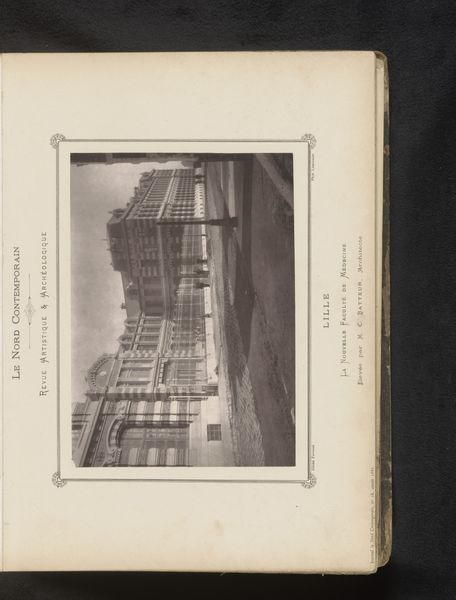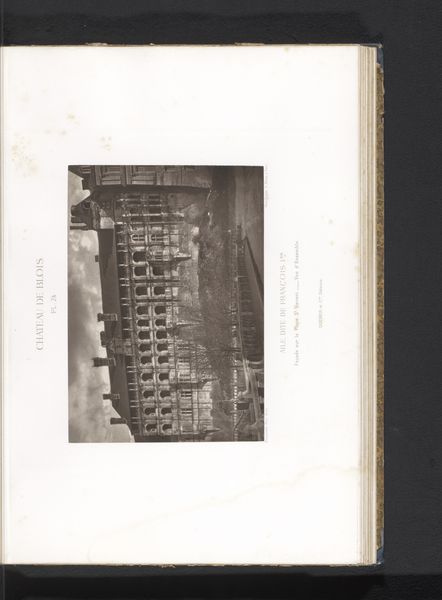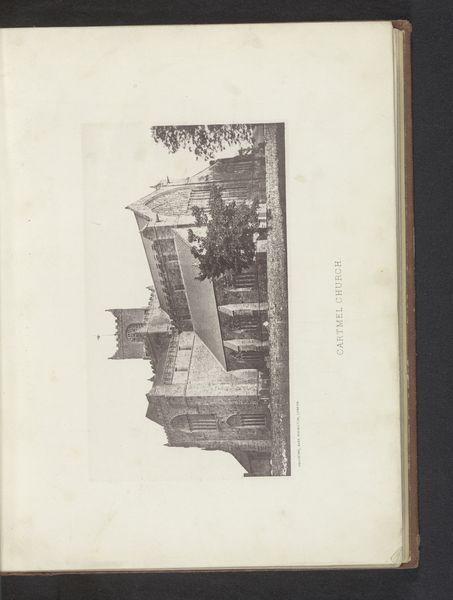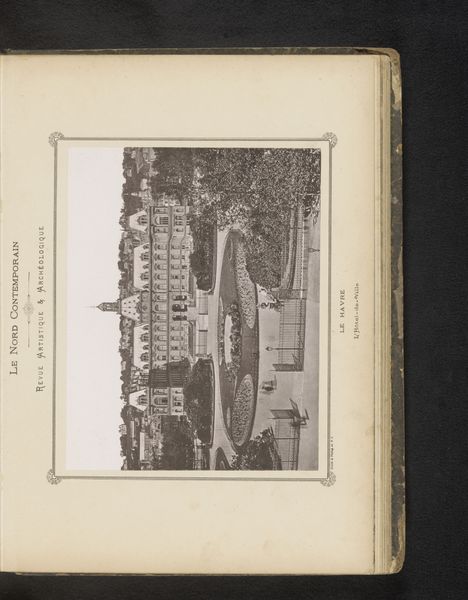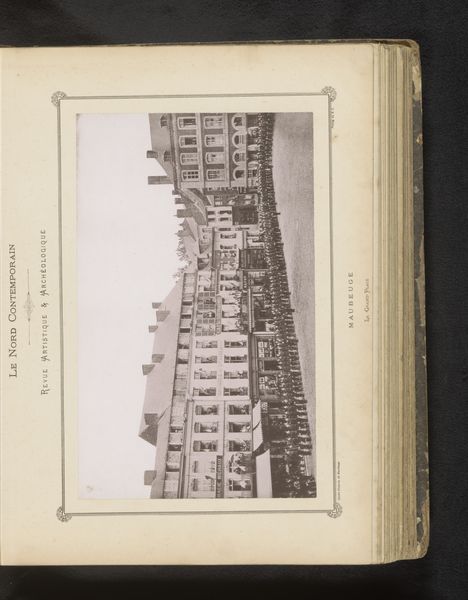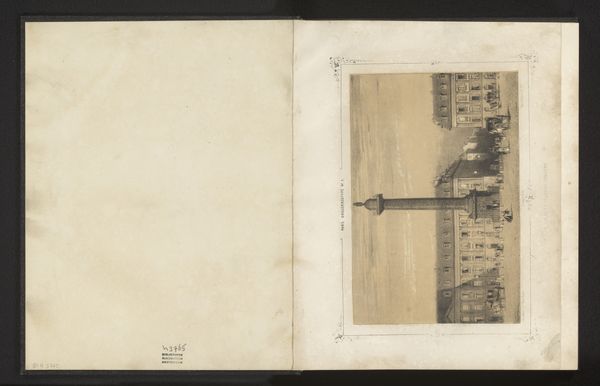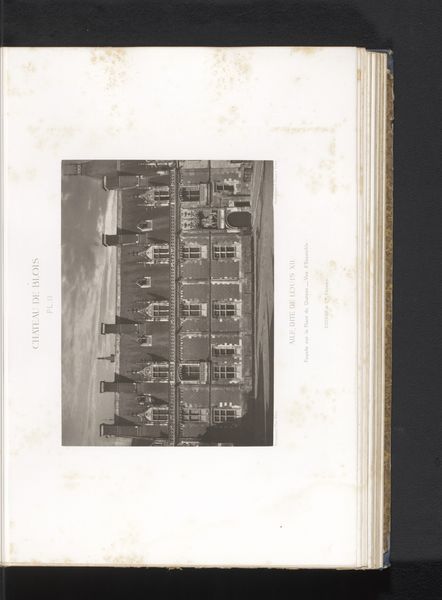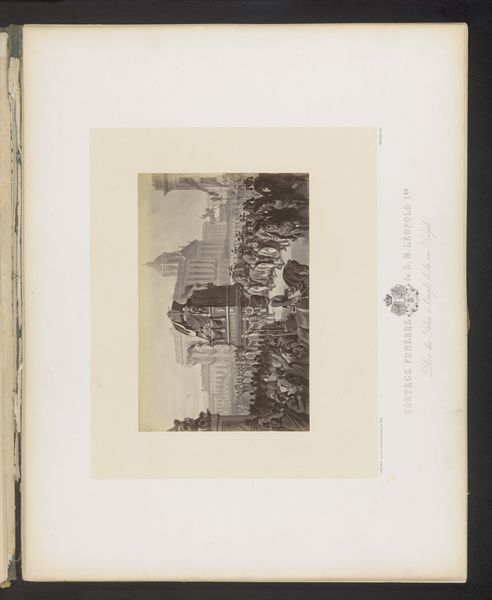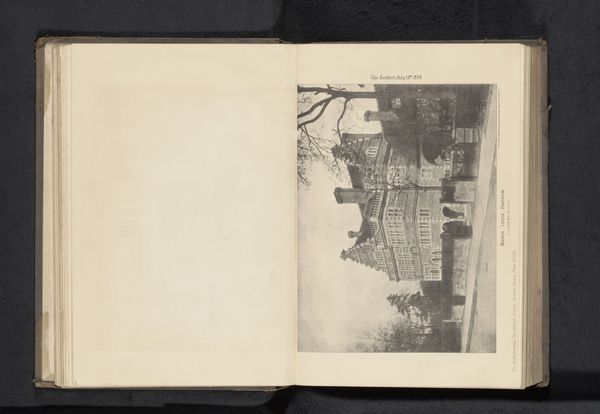
print, photography
# print
#
impressionism
#
photography
#
cityscape
#
street
Dimensions: height 162 mm, width 234 mm
Copyright: Rijks Museum: Open Domain
Curator: This photograph, entitled "Gezicht op de Rue Thiers en het badhuis in het nieuwe deel van Lille," dates from before 1882 and presents a fascinating view of urban life in that era. Editor: It's striking how this image evokes a feeling of restrained progress. The buildings have this austere quality, like they are standing stoically at the dawn of modernity, yet it lacks, to me, any warmth or sign of lived experience in the moment captured. Curator: Interesting observation. Note how the composition guides the eye: The lines of the street and buildings converge, creating a central vanishing point that reinforces a clear structured organization in the composition. The symmetry is compelling, though somewhat dampened by its unevenness. Editor: Precisely! And while the composition pulls us in, the very choice of subject, a bathhouse on Rue Thiers in a "new" part of Lille, hints at social stratification. Bathhouses weren't merely about hygiene; they represented access – or lack thereof – to resources and comfort. Whose city are we really seeing in this picture? Curator: A pertinent question. The print's tones further enhance its subdued emotional quality. Observe how the stark contrasts of light and shadow define each architectural element, simplifying forms, almost reducing each building into a geometrical essence, thus making it more an artifact than just a place to simply live. Editor: Which speaks to power. This controlled depiction of space could symbolize the growing grip of industrialization on everyday life, not without costs for workers, women, and marginalized residents who paid the true cost for what the artist probably wanted to simply express by showing something novel in "Lille Nouveau". Curator: Indeed, one may interpret it as such, given the artist’s engagement with urban landscapes. Yet its geometric elements provide an engagingly simple aesthetic value, which adds another layer of appreciation that escapes easy sociopolitical analysis. Editor: Perhaps we can then conclude it captures both promise and critique, mirroring that liminal stage of Lille's development as it embraced modernization? A print holding space for beauty and inequality—both at the same time. Curator: Precisely; its simplicity can be interpreted on one end, while other ends reflect other layers to unpack the scene for more meanings. A perfect point of intersection of form and socio-political context.
Comments
No comments
Be the first to comment and join the conversation on the ultimate creative platform.
